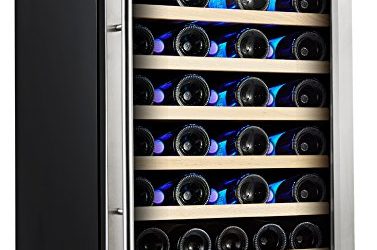Will Bordeaux ever see a screwcap?
When we first started to see the well-presented, stylish stelvin closure on New Zealand wines a decade ago, there was much debate as to whether the closure was good enough to change the industry altogether. Advocates of the modern screwcap insisted it was superior to the cork – after all, it is estimated that one in twelve bottles of wine is corked. Plastic corks had baffled and annoyed us for long enough and it was time for a replacement that actually worked. Wine did not need to be aged on its side to ensure that the cork did not dry out, it could age standing up. Once the excellent Cloudy Bay estate was on board, it was only a matter of time before screwcaps were rolled out across New Zealand, and Australia began to fall into line too.
The excitement died down as screwcaps became standard. Traditionalists would not touch them, and young dynamic industry professionals continued to extol their virtues. It emerged that we didn’t really know how long wine could age for under screwcaps – and let’s face it, it would be a few years before we found out. The screwcap crept into Italy and France. It made Vin de Pays fashionable again. White wine drinkers fell out with Australian Chardonnay and sales of Pinot Grigio soared. The wine industry found other things to talk about.
Screwcaps on First Growths? NEVER ?!
You will see screwcaps on Bordeaux – surveys have shown that generally we don’t mind them on whites and rosés that are destined to be drunk a year or two after bottling. But on the whole, we don’t want to see them on our reds – we just don’t trust them enough. And who wants to order a £300 bottle of Claret at Gordon Ramsay and have the sommelier ceremonially unscrew it? The red wines of Bordeaux are shrouded in mystique – they have history and prestige and elusiveness – the screwcap has no place here no matter how practical or innovative it is. Even if we already knew for certain that wine could age as majestically for decades as it does under a cork, we will never see a screwcap on a first growth because we just don’t want it.
That means, of course, that we take the chance that the wine will not be corked. Imagine buying a 1945 Lafite with impeccable provenance and opening it to find that it is not drinkable. Cork taint is not detectable and it presents a difficult scenario for wine merchants – shoppers can take a leaky milk carton back to Morrisons for a replacement, but it is less convenient to return a bottle of wine that you purchased in 1977. One in twelve bottles is a vague estimate that industry professionals seem to have settled on, but many think it is considerably higher.
In 2007, ‘Decanter’ reported that a second growth would be bottled under stelvin – Les Tourelles de Longueville, the second wine of Pauillac’s Pichon-Longueville. The wine was sold to the UK on-trade where it is a popular choice. Wine that was not destined for the restaurant trade was bottled under cork as before. The timing was bad as stelvins had hit the news once again – as it had been reported that one in 50 bottles could have a sulphurous ‘eggy’ stink. I haven’t tried the wine. As much as I respect the boldness and the innovation of the winemaker, where Bordeaux is concerned, I will take my chances with the cork. I know it is over-romanticising but I like to think of dusty bottles of Claret gently sleeping in their racks in the cellar, just waiting for the right time to be woken, not unceremonially stacked in boxes on top of one another just because they can age standing up.
Screwcaps are practical, and practicality has its place. But perhaps its place is in the supermarket, not the wine cellar.





